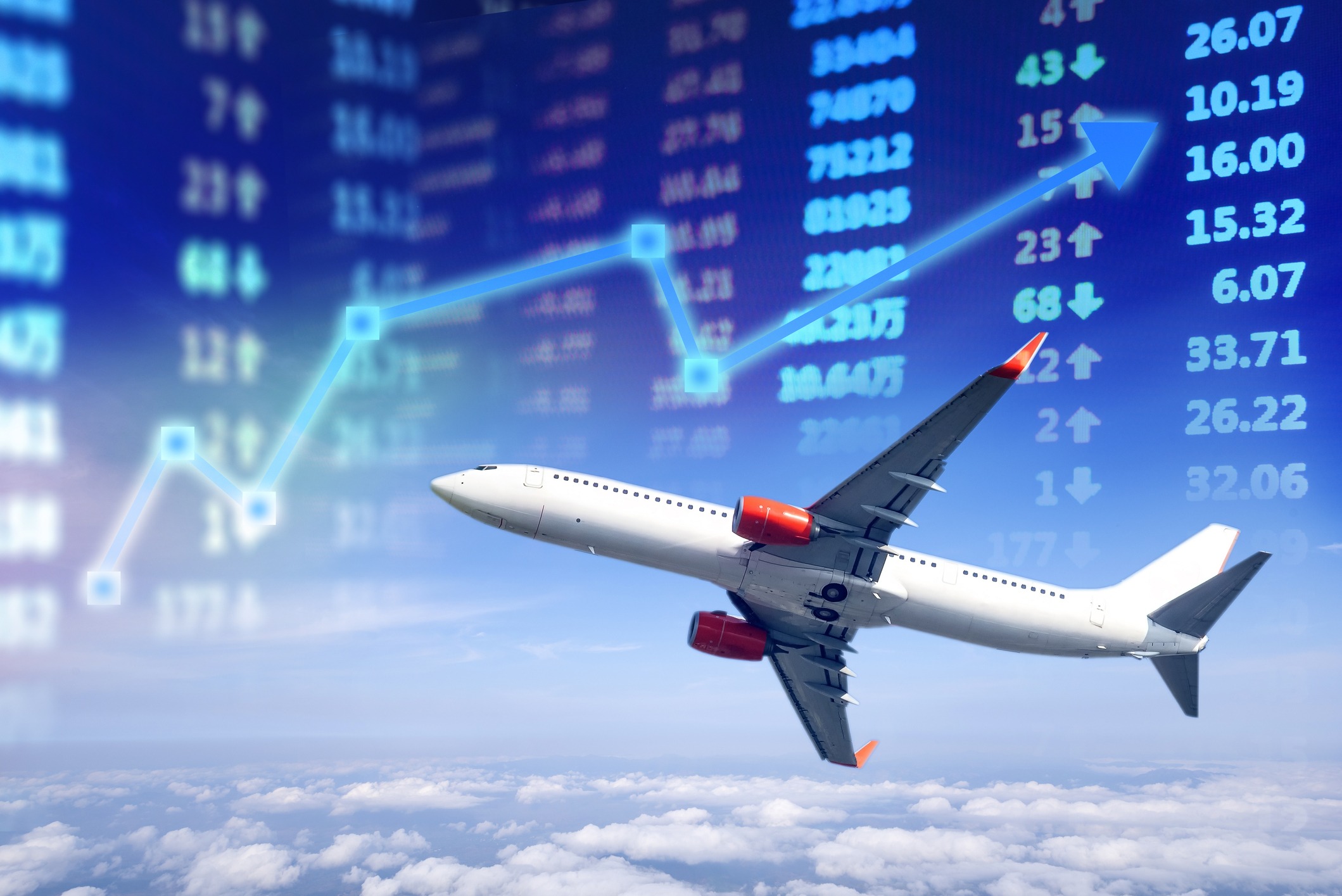The airline industry has been experiencing a bumpy ride, with U.S. carriers such as American Airlines (AAL), United (UAL), and JetBlue (JBLU) facing headwinds as they enter the fourth quarter.
After enjoying a surge in the first half of the year, driven by the enthusiasm of “revenge travel,” these airline stocks have lost their momentum. Even Delta (DAL), the sole major airline to maintain a positive trajectory for the year, has witnessed a descent from its summertime peak.
Interestingly, among these carriers, U.S. airlines offering international routes weather the storm more effectively than their domestic counterparts.
Chris Raite, a sector analyst at Third Bridge, noted this trend, highlighting that international travel tends to be more profitable, providing airlines with greater flexibility to stay competitive.
However, the U.S. Global Jets ETF (JETS), which tracks various airline operators and manufacturers, has declined by approximately 30% over the past three months, erasing the nearly 30% rally it experienced in the first half of the year.
The third-quarter results reflect the industry’s turbulent state, marked by labor negotiations and rising jet fuel costs.
Notably, United’s stock plummeted by 9% after the airline revised its forecast, citing the impact of flight disruptions to Tel Aviv during the Israel-Hamas conflict and escalating fuel expenses.
Fuel cost volatility is not a new challenge, as airlines had previously warned of its adverse effects on their financial performance. Michael Leskinen, the Chief Financial Officer of United, pointed out that the average fuel price for the quarter exceeded expectations, significantly impacting the airline’s third-quarter outlook.
Delta CEO Ed Bastian also underscored the impact of higher fuel and maintenance costs during the carrier’s earnings call in October. While revenue outlook improved, earnings and cash flow were still affected.
American Airlines’ stock rebounded from a three-month low after the company’s profits exceeded Wall Street’s expectations. Nevertheless, the forecast was somewhat subdued due to increased fuel costs and demand trends.
Beyond fuel costs, the airline industry has been grappling with elevated labor expenses, mainly stemming from negotiations amid a pilot shortage. Although all carriers face these challenges, low-cost domestic carriers appear to bear the brunt of the impact.
A year-to-date chart reveals that Frontier (ULCC), Mesa Air (MESA), JetBlue, Southwest (LUV), Alaska Air (ALK), and Spirit (SAVE) have all experienced double-digit percentage declines.
Most peaked around mid-July and have been on a downward trajectory since. American Airlines is down by 8%, United is down by 2%, and Delta has remained up by nearly 2%.
The airline industry’s path to recovery remains to be determined, influenced by many factors, from fuel prices to labor negotiations and shifting demand dynamics.







